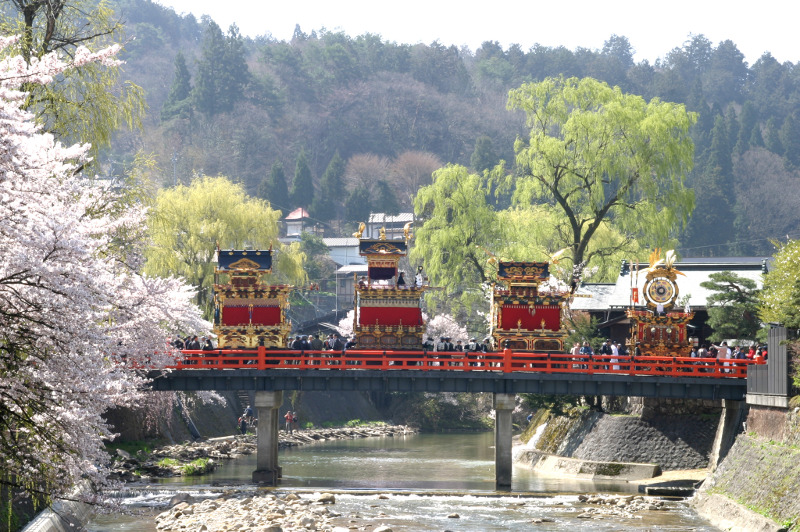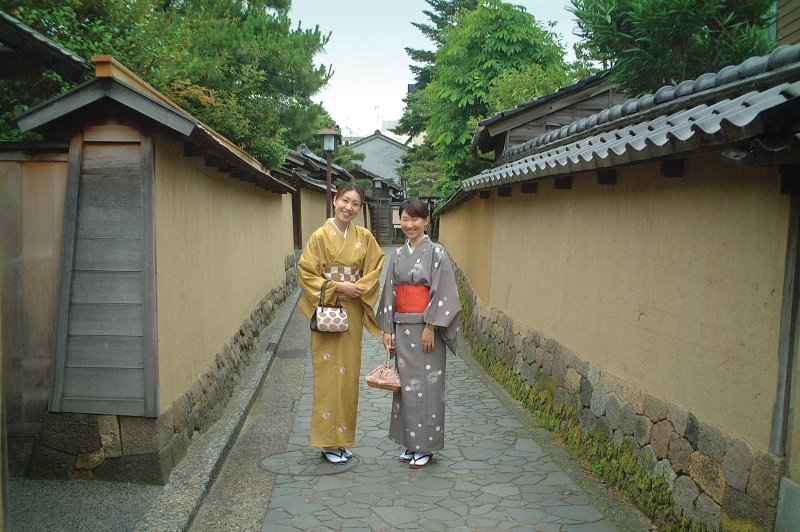Many travellers who have visited Japan are familiar with the ‘Golden Route’ which covers Tokyo, Kyoto and Osaka; however, a lesser known triangle, known as the ‘Second Golden Route’ takes in the towns of Takayama, Shirakawa-go and Kanazawa. These off-the-beaten-track towns allow one to step back in time and experience some of the best of Japanese history and traditional culture.
Takayama Festival in Spring.jpg

Timeless Takayama
Surrounded by mountains, Takayama, in Japan’s Gifu Prefecture, has retained the charm and heritage of the 17th century Edo period when it thrived as a wealthy town of merchants. Here you’ll find delightfully preserved old wooden merchant houses, vibrant morning markets, small museums, tranquil temples, hillside shrines and rare scenes of rural life in Japan.
The city is famous for its biannual Takayama Festival, which dates back to the mid-1600s, and is regarded among Japan's most beautiful festivals. In spring (April) and autumn (October) parades featuring the centuries-old ornate floats fill the streets. At other times some of the floats can be viewed at the Takayama Yatai Kaikan exhibition hall next to Sakurayama Hachiman Shrine.
Takayama is also blessed with the perfect conditions for producing sake. Several old breweries can be found in the narrow streets of Sanmachi Suji, Takayama's old town, identified by the balls of cedar hanging above the entrance. The cedar balls are green when brewing begins, and when they turn brown, the sake is ready. Many stores offer the chance to taste and learn more about this precious drop.
Make sure to buy one of the region’s Sarubobo ‘Monkey Baby’ dolls which grandmothers and mothers make to bring happiness and good health to their children. It’s said that if you own this doll, you’ll be healthy and happy too.
Kenrokuen Garden Winter JNTO.JPG
Go to Shirakawa-Go
Less than an hour by bus from Takayama lies the mountain village of Shirakawa-go, famed for its A-frame farmhouses known as gassho-zukuri, which means "constructed like hands in prayer".
Shirakawa lies in a region that was cut off from the rest of the world for a very long time. The steep thatched roofs of the farmhouses were developed over many generations to withstand the large amounts of snow that falls in the region in winter.
During the village's silk-farming heyday - from the mid-19th century to the mid-20th century - the multi-storey attics were used to cultivate silkworms. Some of the houses are more than 300 years old, and are the only examples of their kind in Japan. Along with neighbouring Gokayama, Shirakawa-go is a UNESCO World Heritage site.
Head up north for the perfect Japanese brew: Cheers from Sapporo
Sightseeing with a difference: How to Make Japan's Iconic Attractions Even Better
Ogimachi, Shirakawa-go's largest village and main attraction, makes a good day trip from Takayama, or a stop on the journey between Takayama and Kanazawa. However, the best way to experience it is to stay overnight at one of the farmhouses, many of which operate as family run, Japanese-style lodges.
You’ll sleep on tatami mats on the floor, and have your dinner cooked on the open fireplace with fresh seasonal ingredients collected from the surrounding forests. It’s a wonderful way to experience an old part of Japan and the hospitality of a traditional Japanese family home.
Higashi Chaya Geisha district Kanazawa.jpg

Kick back in Kanazawa
Kanazawa, capital of Ishikawa Prefecture, is famous for its gardens, geishas and gold, as well as its samurai history.
The centrepiece of the city is the imposing Kanazawa Castle, where the Maeda samurai clan once ruled the most powerful domain outside Tokyo. Next to the castle, the sprawling Kenroku-en Garden is regarded as one of the three most beautiful gardens in Japan.
In the original samurai residential district of Nagamachi, the roads have not changed in 350 years, and you can still see old samurai houses. After Kyoto, Kanazawa also has Japan's largest number of geisha, and the cobblestone streets of Higashi Chaya are right out of the pages of a novel, with some geisha houses open to the public for traditional tea ceremonies.
Kanazawa has ninjas as well. Myoryuji Temple, known as Ninjadera, (Ninja Temple) is a building full of tricks and traps. Step inside and discover the hidden tunnels, secret rooms, traps, and a labyrinth of corridors and staircases.
Literally meaning “marsh of gold”, Kanazawa also produces more than 90 per cent of the country’s gold-leaf. There are many places where you can buy the products, including food containing gold leaf, or even try your hand at creating your own masterpiece at a workshop.
Ohmi-cho is a 280-year-old market known as Kanazawa’s Kitchen, and is a must-visit for a look at the incredible bounty of seafood, fresh from the Sea of Japan.
Images courtesy of Japan National Tourism Association













